
Richard Austen Butler, Baron Butler of Saffron Walden,, also known as R. A. Butler and familiarly known from his initials as Rab, was a prominent British Conservative Party politician; he was effectively Deputy Prime Minister to Anthony Eden and Harold Macmillan, although he only held the official title for a brief period in 1962–63. He was one of his party's leaders in promoting the post-war consensus through which the major parties largely agreed on the main points of domestic policy until the 1970s; it is sometimes known as "Butskellism" from a fusion of his name with that of his Labour counterpart, Hugh Gaitskell.
The Tripartite System was the arrangement of state-funded secondary education between 1945 and the 1970s in England and Wales, and from 1947 to 2009 in Northern Ireland. It was an administrative implementation of the Education Act 1944 and the Education Act 1947.
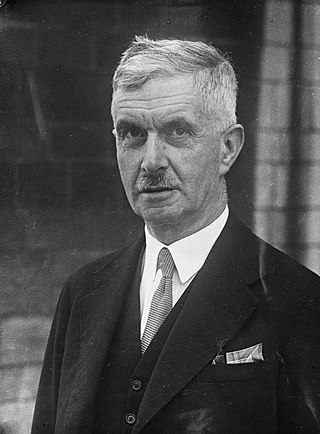
James Chuter Chuter-Ede, Baron Chuter-Ede,, was a British teacher, trade unionist and Labour Party politician. He was a Member of Parliament (MP) for 32 years, and served as the sole Home Secretary under Prime Minister Clement Attlee from 1945 to 1951, becoming the longest-serving Home Secretary of the 20th century.
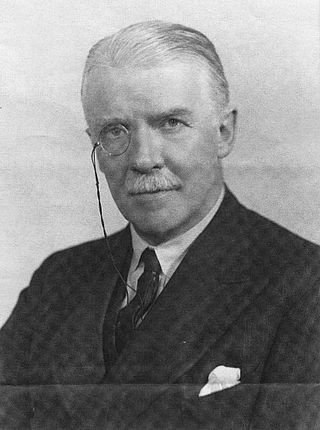
Herwald Ramsbotham, 1st Viscount Soulbury was a British Conservative politician. He served as a government minister between 1931 and 1941 and served as Governor-General of Ceylon between the years 1949 and 1954.
The post-war consensus, sometimes called the post-war compromise, was the economic order and social model of which the major political parties in post-war Britain shared a consensus supporting view, from the end of World War II in 1945 to the late-1970s. It ended during the governance of Conservative Party leader Margaret Thatcher. The consensus tolerated or encouraged nationalisation, strong trade unions, heavy regulation, high taxes, and an extensive welfare state.
Secondary technical schools, referred to colloquially as secondary techs or simply techs, were a type of secondary school in England and Wales that existed in the mid-20th century under the Tripartite System of education. Few were built; their main interest is theoretical.

The Church Educational System (CES) of the Church of Jesus Christ of Latter-day Saints consists of several institutions that provide religious and secular education for both Latter-day Saint and non–Latter-day Saint elementary, secondary, and post-secondary students and adult learners. Approximately 700,000 individuals were enrolled in CES programs in 143 countries in 2011. CES courses of study are separate and distinct from religious instruction provided through wards. Clark G. Gilbert, a general authority seventy, has been the CES commissioner since August 1, 2021.

The Elementary Education Act 1870, commonly known as Forster's Education Act, set the framework for schooling of all children between the ages of 5 and 12 in England and Wales. It established local education authorities with defined powers, authorized public money to improve existing schools, and tried to frame conditions attached to this aid so as to earn the goodwill of managers. It has long been seen as a milestone in educational development, but recent commentators have stressed that it brought neither free nor compulsory education, and its importance has thus tended to be diminished rather than increased.

The Education Act 1918, often known as the Fisher Act, is an Act of the Parliament of the United Kingdom. It was drawn up by H. A. L. Fisher. Herbert Lewis, Parliamentary Secretary to the Board of Education, also played a key role in drawing up the Act. The Act applied only to England and Wales; a separate "Education (Scotland) Act 1918" applied for Scotland.
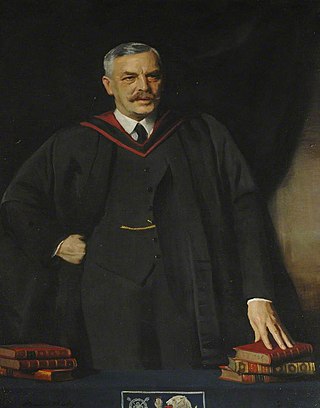
Sir Cyril M. Norwood was an English educationalist who served as Headmaster of Bristol Grammar School and Harrow School, Master of Marlborough College, and President of St John's College, Oxford.

The Education Act 1902, also known as the Balfour Act, was a highly controversial Act of Parliament that set the pattern of elementary education in England and Wales for four decades. It was brought to Parliament by a Conservative government and was supported by the Church of England, opposed by many Nonconformists and the Liberal Party. The Act provided funds for denominational religious instruction in voluntary elementary schools, most of which were owned by the Church of England and the Roman Catholics. It reduced the divide between voluntary schools, which were largely administered by the Church of England, and schools provided and run by elected school boards, and reflected the influence of the Efficiency Movement in Britain. It was extended in 1903 to cover London.

The Beveridge Report, officially entitled Social Insurance and Allied Services, is a government report, published in November 1942, influential in the founding of the welfare state in the United Kingdom. It was drafted by the Liberal economist William Beveridge – with research and publicity by his wife, mathematician Janet Philip – who proposed widespread reforms to the system of social welfare to address what he identified as "five giants on the road of reconstruction": "Want… Disease, Ignorance, Squalor and Idleness". Published in the midst of World War II, the report promised rewards for everyone's sacrifices. Overwhelmingly popular with the public, it formed the basis for the post-war reforms known as the welfare state, which include the expansion of National Insurance and the creation of the National Health Service.
The history of education in England is documented from Saxon settlement of England, and the setting up of the first cathedral schools in 597 and 604.
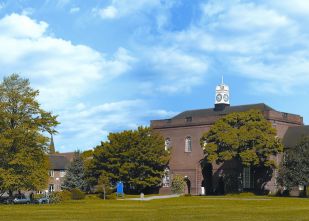
A direct grant grammar school was a type of selective secondary school in the United Kingdom that existed between 1945 and 1976. One quarter of the places in these schools were directly funded by central government, while the remainder attracted fees, some paid by a Local Education Authority and some by the pupils' parents or guardians. On average, the schools received just over half of their income from the state.
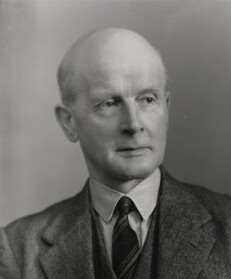
Sir Frederick Clarke was an English educationist who was Director of the Institute of Education in the University of London between 1936 and 1945.

Elementary schools were the first schools in England and Wales intended to give a basic education to the children of working class families. At the start of the 19th century, the only schooling available to these young people was run by private concerns or by charities, and was often of a very poor standard. In the first decades of that century, a network of elementary schools was established by societies backed by the Christian churches. In an effort to expand this "voluntary" system, the government made grants available to these societies, initially for new school buildings but later towards their running costs. It became apparent that although this system worked reasonably well in rural communities, it was far less successful in the rapidly expanding industrial cities, and that Britain was falling behind the rest of the developed world. In 1870, an act of parliament established elected school boards throughout England and Wales, which were empowered to create secular "board schools" funded by local taxation where there was no provision by the church societies. Further legislation made school attendance compulsory, and eventually free of charge. The problem of how the education of older pupils should be managed was solved by abolishing school boards in 1902 and passing responsibility to local councils. Elementary schools were eventually replaced in 1944 by the system of primary and secondary education.
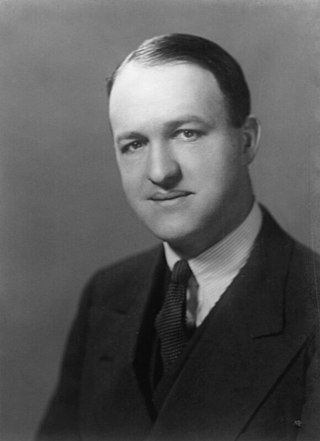
Richard Austen Butler, Baron Butler of Saffron Walden,, generally known as R. A. Butler and familiarly known from his initials as Rab, was a British Conservative politician.
Education in Utah has a long history that has led to a more efficient education system throughout the state.
Section 4 of the Education Act 1944 set-up two Central Advisory Councils for Education, one for England and one for Wales and Monmouthshire. The purpose of the councils was to advise the Minister of Education upon matters connected with educational theory and practice, the advices were used to refine educational policy and develop educational institutes. Starting with a terms of reference, the councils would carryout an enquiry and produce a report which would be submitted to the Minister of Education who could choose to publish the report.
The federal government of the United States has limited authority to act on education, and education policy serves to support the education systems of state and local governments through funding and regulation of elementary, secondary, and post-secondary education. The Department of Education serves as the primary government organization responsible for enacting federal education policy in the United States.














